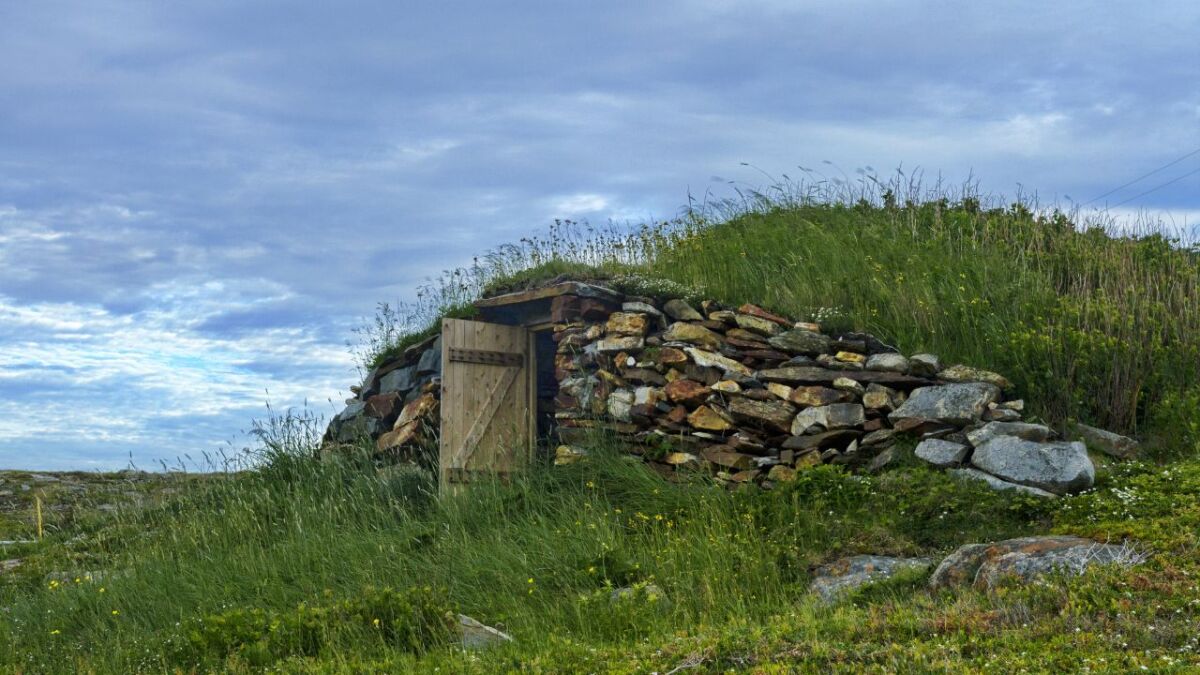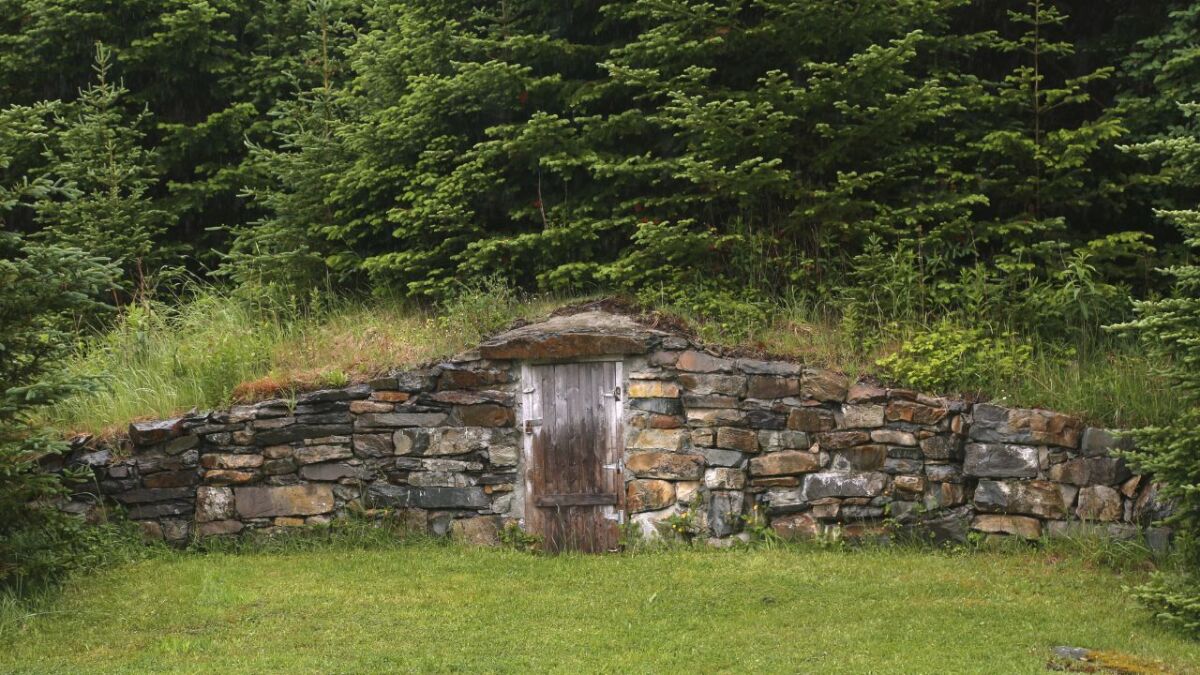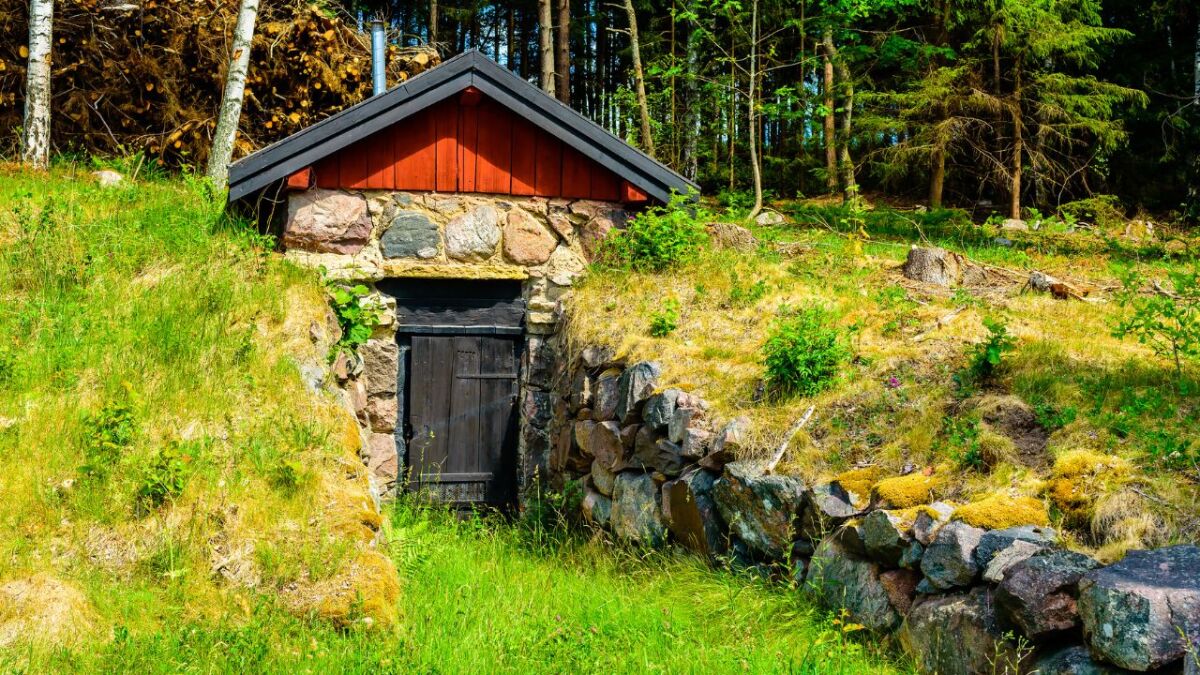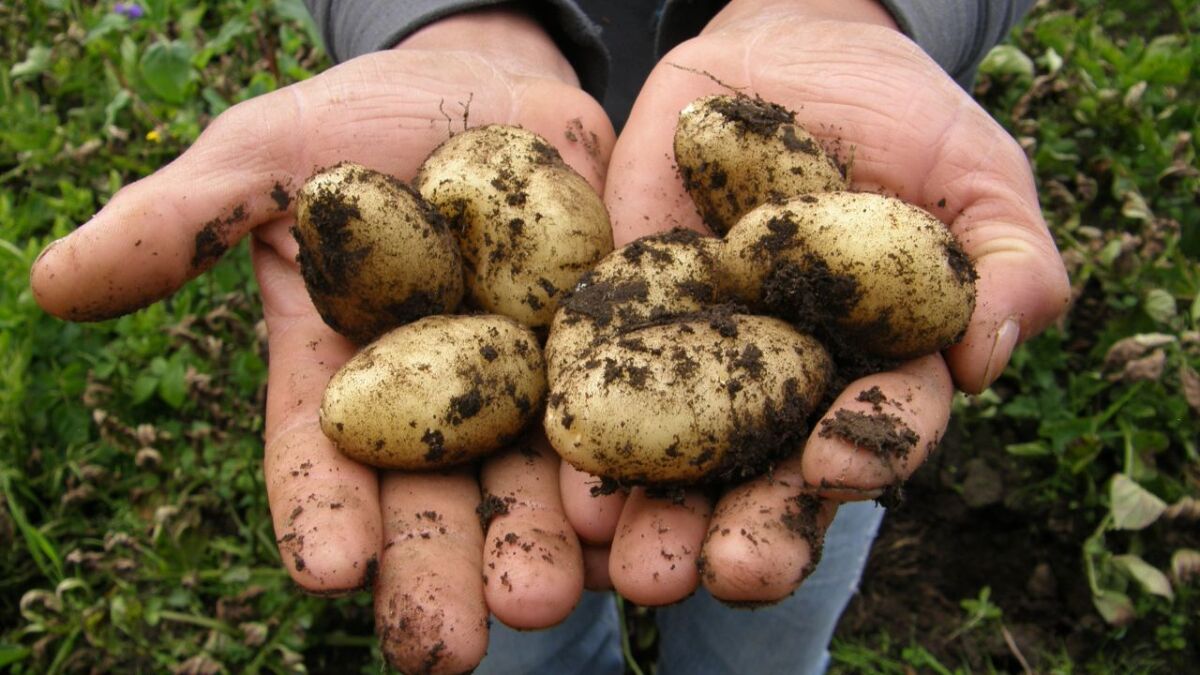
What is an earth cellar? - How to build your own refrigerator that doesn't use electricity
👉 The key facts from this guide
- Root cellars are underground structures for storing food that function without electricity and are sustainable.
- An earth cellar should be at least 80 cm deep, ideally at a temperature of 0-5 degrees Celsius and 85-95% humidity.
- Choose a shady location for construction and pay attention to the water table.
- An earth cellar offers advantages such as independence from supermarkets, no high electricity costs, and sustainable cooling.
- Storing food in the root cellar requires good ventilation and proper separation of food to avoid mold and rapid ripening.
- A mini root cellar can be used for short-term food storage by sinking a barrel or bucket into the ground.
Food has been stored in underground cellars since ancient times to make it last longer.
With the invention of the conventional refrigerator, earth cellars became obsolete and today most people are hardly familiar with this form of storage.
With the increasing need for self-sufficiency and preparation for all emergency scenarios, the earth cellar is once again in focus.
Because an earth cellar works without electricity and is therefore an independent and sustainable way to store and preserve food.
Now learn how a root cellar works and how to build one yourself.
But what exactly is a root cellar?
A root cellar is an underground structure used for storing vegetables, fruits, or other food items. It is typically built at a depth where temperature and humidity are fairly stable, ideally between 0 and 5 degrees Celsius and 85% to 95% humidity.
A root cellar is built below ground level. It takes advantage of the temperature and humidity below the ground, which are much more constant than above ground.
To create these conditions, the basement must have a certain depth. For this, a depth of at least 80 centimeters is necessary.
Does that sound interesting to you?
Then let's go into more detail and see how these basements are built.
How are root cellars built?
For this type of storage, you first need a chamber underground. If you live on a slope, you can also build the cellar there. This ensures ground-level access.
Make sure to align the entrance to the north to minimize sun exposure (if you live in the Northern Hemisphere).
Generally, you should find a shady spot for the construction.
Even in flatland, you can build the basement in the form of a hole. The width is variable and ranges from the size of a trash can to several meters in diameter.
The root cellar should be at least 80 centimeters deep, but ideal conditions are only created at 120 centimeters. At a depth of three meters, you will have refrigerator-like conditions and thus optimal conditions for long-term storage.

It is important to pay attention to the groundwater level. You should definitely measure or find out the groundwater level before digging. Once this is done, you can proceed.
The surrounding earth insulates the basement and conducts heat very slowly. If necessary, the walls can also be lined with wood.
In addition, the interior is protected from frost. Your food can be safely stored all year round.
However, the construction of an earth cellar presents some difficulties in certain parts of the world. This type of storage is best suited for countries with distinct seasons. High water levels or extremely hot months could strain the storage function.
Traditionally, the root cellar was used for storing root vegetables. With proper separation of areas, fruits, meat, or beverages can also be stored.
Finally, the basement still needs to be equipped with a locking mechanism or a door.
Thus, the conditions remain constant, and additionally a door keeps animals away from your valuable supply.
Advantages of an Earth Cellar
If you grow your vegetables in large quantities (e.g., in your self-sufficient garden), you need space for storage.
A root cellar can reliably store root vegetables for a longer period of time. Even if you source the vegetables from external sources, you can accommodate large quantities of high-quality, seasonal vegetables.
So you are independent of conventional food distributors like supermarkets.
In addition, you don't have to pay high electricity costs and cool your food in a sustainable way.

Functioning of Earth Cellars
1. No Frost
Root cellars are not exposed to frost. This is advantageous because especially fruits and vegetables with high water content become soft and ultimately spoil after freezing.
2. High humidity
This is essential because especially vegetables and fruits lose water during dry storage and thus also change their shape. This reduces their shelf life.
To ensure optimal humidity, store food with high moisture requirements at the bottom. You can also place root vegetables like potatoes or parsnips in damp sand to promote water retention.
3. Own ventilation system
The ventilation in an earth cellar ensures temperature regulation on one hand, but the air circulation also prevents the formation of mold and mildew.
That's why it's important to use containers and shelves in your basement. If your supplies are simply stacked on top of each other, optimal ventilation cannot occur.
Anyway, you should regularly check the content to prevent potential mold infestation.
4. Reduction of Ethylene
Ethylene is a gas that is emitted by fruits and vegetables, among other things, and leads to ripening. Some fruits emit more ethylene than others, which has the effect of causing surrounding fruits to ripen faster.
This is the reason why bananas and apples are unsuitable for an underground cellar. However, the underground cellar also leads to less ethylene emission.
Especially bananas, apples, pears, blueberries, mangoes, nectarines, peaches, plums, and tomatoes release a lot of ethylene.
Particularly sensitive to ethylene are: apples, pears, leafy vegetables, blueberries, cauliflower, beans, broccoli, potatoes, leeks, nectarines, or tomatoes
The Mini Earth Cellar for Spontaneous Food Storage
If you are only in one place for a short time, it is not worth digging a huge underground cellar.
Here it is possible to sink a barrel or bucket into the ground and store your food in it.
Root vegetables in particular can be stored here for an extended period of time.
If you don't have a bucket or something similar at hand, it is also possible to build a cellar without much equipment. For this, a layer of clay or clay must be placed at the bottom. This will prevent condensation from forming.
Stack the vegetables from heavy to light on top of it. You can use twigs and leaves as a cover.
Vegetables that can be stored well together
Many types of vegetables have similar temperature and humidity requirements.
The following can be stored together in the same bucket/root cellar at 0 to 4 degrees Celsius and 90 to 95% humidity:
- Beetroot
- Brussels sprouts
- Cabbage
- Carrots
- Cauliflower
- Celery
- Endive
- Horseradish
- Kale
- Leek
Do not store damaged vegetables!
Simply brush off most of the dirt. Do not rinse or wash the vegetables. Use damaged fruits and vegetables immediately. Bacteria and fungi quickly settle on bruised or cut produce.

Store onions in a cool, dry root cellar with temperatures of 0 to 1 °C and 60 to 70% humidity. You can store peas with onions.
Normal potatoes and sweet potatoes must be stored separately. Normal potatoes should be stored at 3 to 4 °C and 80 to 90% humidity. Sweet potatoes should be stored at 10 to 13 °C with 80 to 90% humidity.
Dried beans must be kept cool and dry at temperatures between 0 and 10 °C with 60 to 70% humidity.
Pumpkins and zucchini can be stored together in a warm, dry root cellar. The temperatures should be maintained between 10 and 13 °C with a humidity level of 60 to 75%.
Store apples and pears in a cold, damp cellar at temperatures of 0 to 4 °C at 80 to 90% humidity.
If you notice that your fruit or vegetables are starting to shrivel, the humidity is too low.
Try spraying the layers of straw with some water to increase the moisture content. If the fruit or vegetables have a little condensation or moisture, you should reduce the humidity in the root cellar.
Replace the straw with fresh, dry straw and make sure that no water is under the bucket or in the root cellar.
Conclusion: Root cellars are a fantastic option for storing food
Depending on where you live, an earth cellar can be a great option for long-term food storage.
Especially when growing your food, a self-sufficient storage is worthwhile. If you want to prepare for any survival situations, the root cellar is essential.
Especially during a power outage, you remain independent and rely solely on a low groundwater level.
It is also possible to build your own small earth refrigerator in nature with little equipment.
It is important to consider the composition and separation of food. Fruits with a high ethylene content should be stored separately to avoid affecting the rest of your vegetables.
Have fun building and experimenting!

Sources for the guide
https://survivalfreedom.com/what-is-a-root-cellar-why-they-work-what-they-are-used-for/
https://survivalfreedom.com/how-long-foods-last-in-a-root-cellar-printable-storage-chart/
https://utopia.de/ratgeber/ethylen-bei-obst-und-gemuese-was-du-ueber-das-gas-wissen-solltest/
https://www.mein-schoener-garten.de/gartenpraxis/nutzgaerten/erdkeller-bauen-31896
https://www.almanac.com/content/root-cellars-types-and-storage-tips

Author of the guide
Martin Gebhardt
Hey, I'm Martin. On my blog, you will learn the basics and numerous details about living in the wild. I think survival, bushcraft and the good life in nature are the keys to happiness. Find me here on Instagram or on YouTube. You can find more about my mission on the About Me page.
Was this guide helpful?
41 people found this guide helpful.
4.90 out of 5 points (42 Ratings)
Comments (0)
This post may contain affiliate links. So if you click on the links and make a purchase, I will receive a small commission at no additional cost to you. Click here, to learn more about it.


